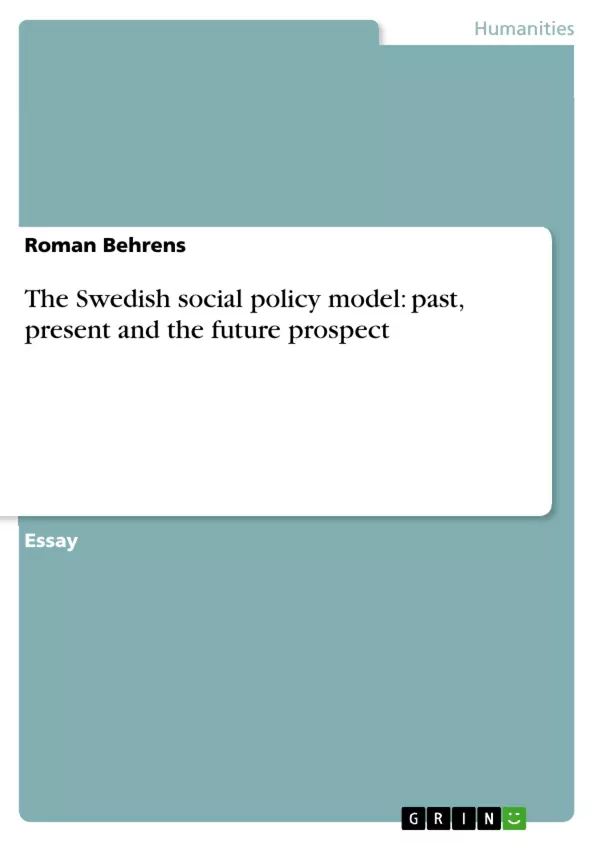In this ‚essay’ I will try to give answers to all questions dealing with the Swedish welfare state,
Swedish social policy model or the welfare state in general. Regarding to the course-precept it
is necessary to say that I will answer by treating every question on its own, what may creates a
different kind of ‘essay’.
Inhaltsverzeichnis (Table of Contents)
- What is a welfare state? How does it differ from the definition of social policy?
- The welfare state represents a triumph of the social democratic left. Do you agree?
- Describe the main ideal-typical models of welfare state. Do typologies based on ideal-types have theoretical and empirical value?
- How does the Swedish welfare model differ from the other welfare state regimes (e.g. liberal, conservative corporist, Eastern European)?
- What are the main factors influencing the development of welfare state in different societies?
- Why is it possible to maintain “Swedish social policy model” in Sweden, but not in any other country? Describe the main features of the Swedish welfare state.
- Please explain historical, political and economic conditions under which the Swedish model has become possible to maintain.
Zielsetzung und Themenschwerpunkte (Objectives and Key Themes)
This essay aims to analyze the Swedish welfare state model, exploring its historical development, key features, and differentiating it from other welfare models.- Definition and differentiation between welfare state and social policy
- The role of social democracy in shaping the Swedish welfare model
- Comparison of different welfare state models (conservative, liberal, social-democratic)
- The distinctive features of the Swedish welfare state
- The historical, political, and economic factors influencing the Swedish welfare state
Zusammenfassung der Kapitel (Chapter Summaries)
- The first chapter defines the concept of a welfare state and distinguishes it from social policy, highlighting the role of the state and the scope of intervention.
- Chapter 2 analyzes the historical context and influence of social democracy on the development of the Swedish welfare state, drawing attention to the impact of WWII and the social reforms implemented afterwards.
- Chapter 3 explores the main typologies of welfare state models - conservative, liberal, and social-democratic - and their theoretical and empirical significance.
- Chapter 4 focuses on the uniqueness of the Swedish welfare model compared to other regimes, emphasizing its aim for full employment and a relatively equal income distribution.
- Chapter 5 discusses the factors influencing the development of welfare states in different societies, including unemployment, birth rates, egalitarianism, and social policy.
- Chapter 6 delves into the reasons behind the sustainability of the "Swedish social policy model" in Sweden, highlighting its main features: universalism, a large public sector, gender equality policies, and corporatism.
- Chapter 7 provides an overview of the historical, political, and economic conditions that enabled the emergence and successful implementation of the Swedish model.
Schlüsselwörter (Keywords)
The essay centers around the concept of the Swedish welfare state model, analyzing its historical development, key features, and distinguishing it from other welfare models. Key topics include social democracy, welfare state typology, full employment, universalism, gender equality, corporatism, and economic and political factors influencing welfare development.
Ende der Leseprobe aus 9 Seiten
- nach oben
- Arbeit zitieren
- Roman Behrens (Autor:in), 2008, The Swedish social policy model: past, present and the future prospect, München, GRIN Verlag, https://www.grin.com/document/129800
Blick ins Buch



